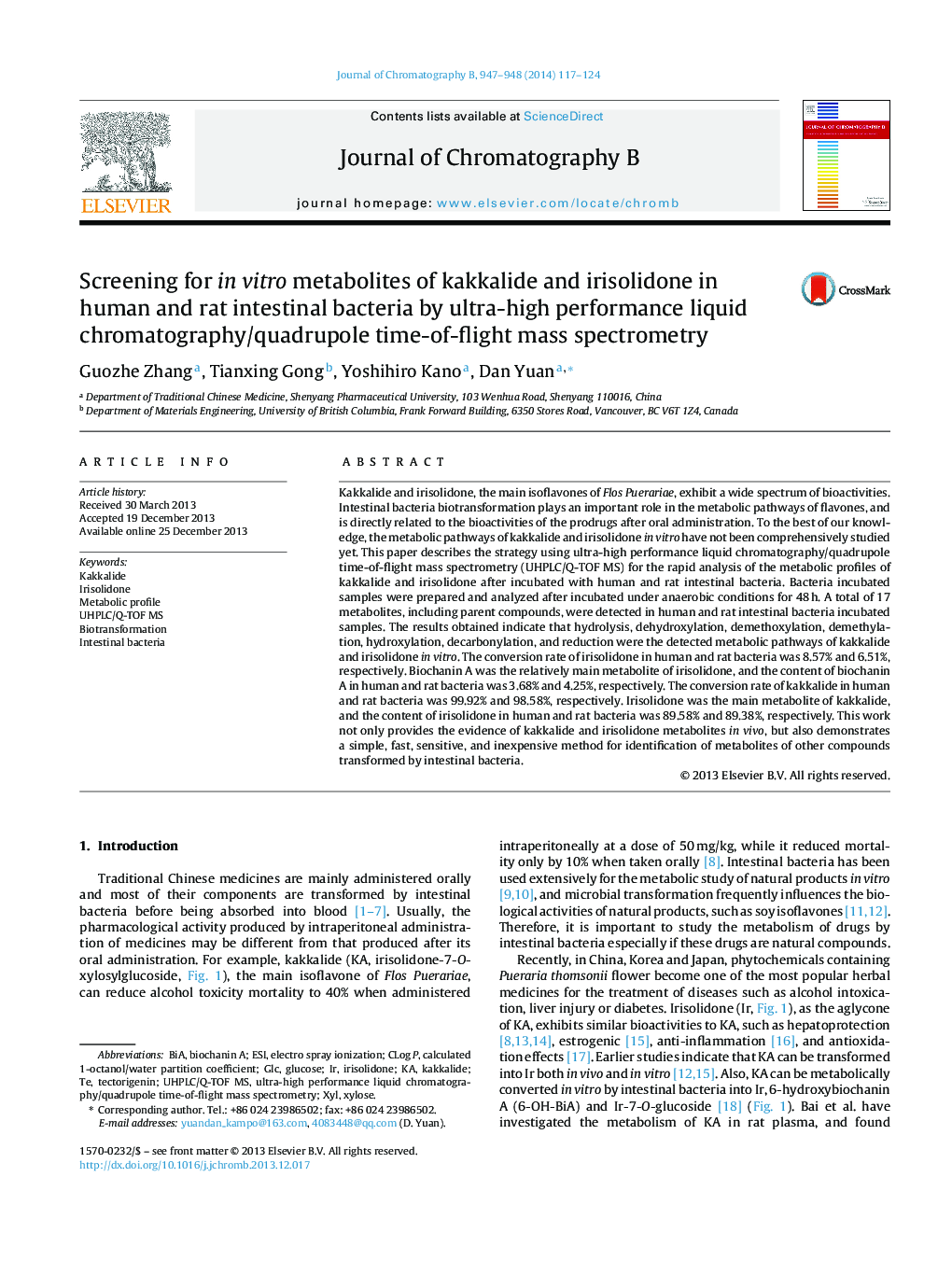| کد مقاله | کد نشریه | سال انتشار | مقاله انگلیسی | نسخه تمام متن |
|---|---|---|---|---|
| 1212853 | 1494091 | 2014 | 8 صفحه PDF | دانلود رایگان |

• Screening for metabolites of kakkalide and irisolidone in intestinal bacteria.
• UPLC/Q-TOF MS method was developed for metabolites identification.
• Total 17 metabolites and 7 metabolic pathways were found in vitro.
Kakkalide and irisolidone, the main isoflavones of Flos Puerariae, exhibit a wide spectrum of bioactivities. Intestinal bacteria biotransformation plays an important role in the metabolic pathways of flavones, and is directly related to the bioactivities of the prodrugs after oral administration. To the best of our knowledge, the metabolic pathways of kakkalide and irisolidone in vitro have not been comprehensively studied yet. This paper describes the strategy using ultra-high performance liquid chromatography/quadrupole time-of-flight mass spectrometry (UHPLC/Q-TOF MS) for the rapid analysis of the metabolic profiles of kakkalide and irisolidone after incubated with human and rat intestinal bacteria. Bacteria incubated samples were prepared and analyzed after incubated under anaerobic conditions for 48 h. A total of 17 metabolites, including parent compounds, were detected in human and rat intestinal bacteria incubated samples. The results obtained indicate that hydrolysis, dehydroxylation, demethoxylation, demethylation, hydroxylation, decarbonylation, and reduction were the detected metabolic pathways of kakkalide and irisolidone in vitro. The conversion rate of irisolidone in human and rat bacteria was 8.57% and 6.51%, respectively. Biochanin A was the relatively main metabolite of irisolidone, and the content of biochanin A in human and rat bacteria was 3.68% and 4.25%, respectively. The conversion rate of kakkalide in human and rat bacteria was 99.92% and 98.58%, respectively. Irisolidone was the main metabolite of kakkalide, and the content of irisolidone in human and rat bacteria was 89.58% and 89.38%, respectively. This work not only provides the evidence of kakkalide and irisolidone metabolites in vivo, but also demonstrates a simple, fast, sensitive, and inexpensive method for identification of metabolites of other compounds transformed by intestinal bacteria.
Journal: Journal of Chromatography B - Volumes 947–948, 1 February 2014, Pages 117–124